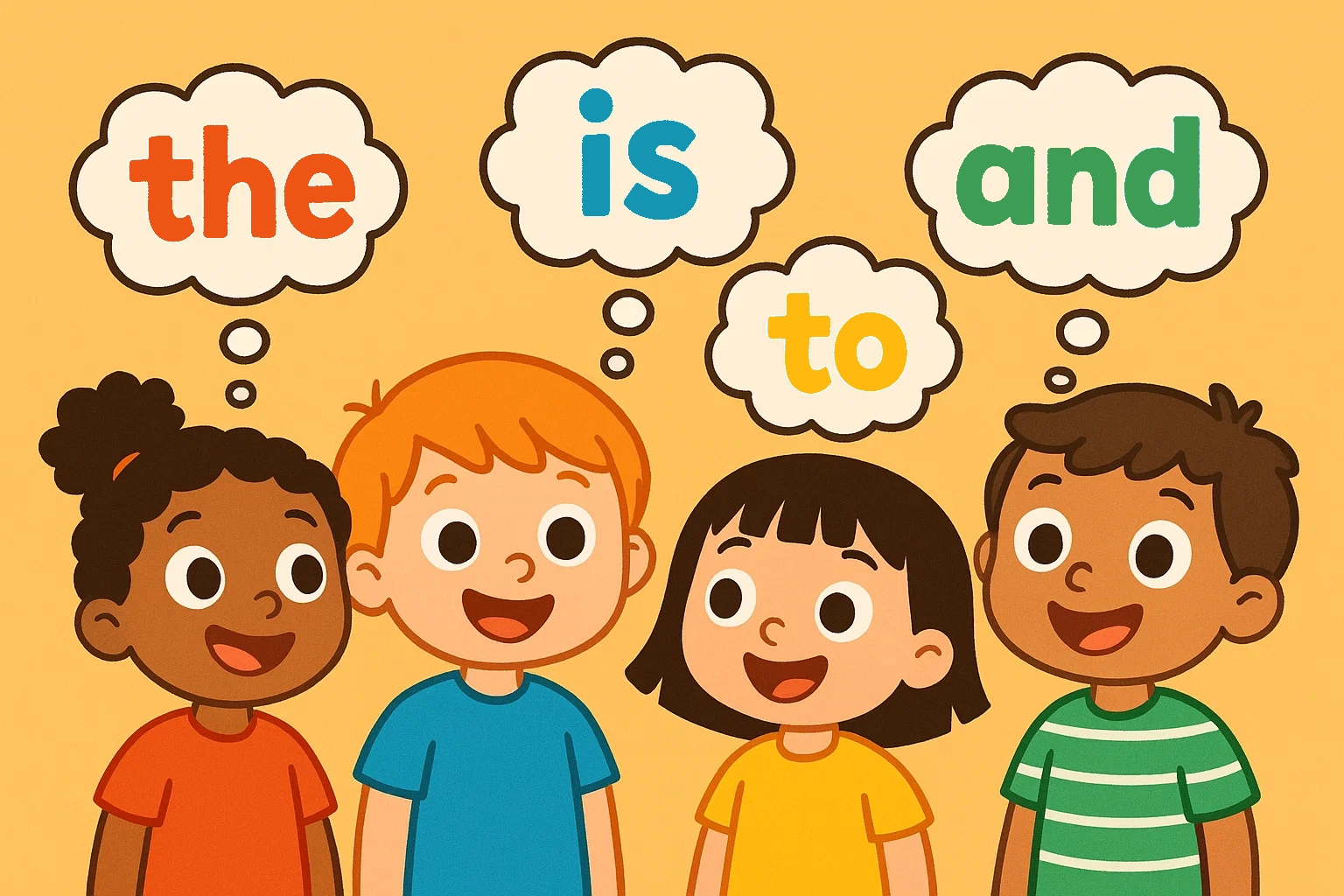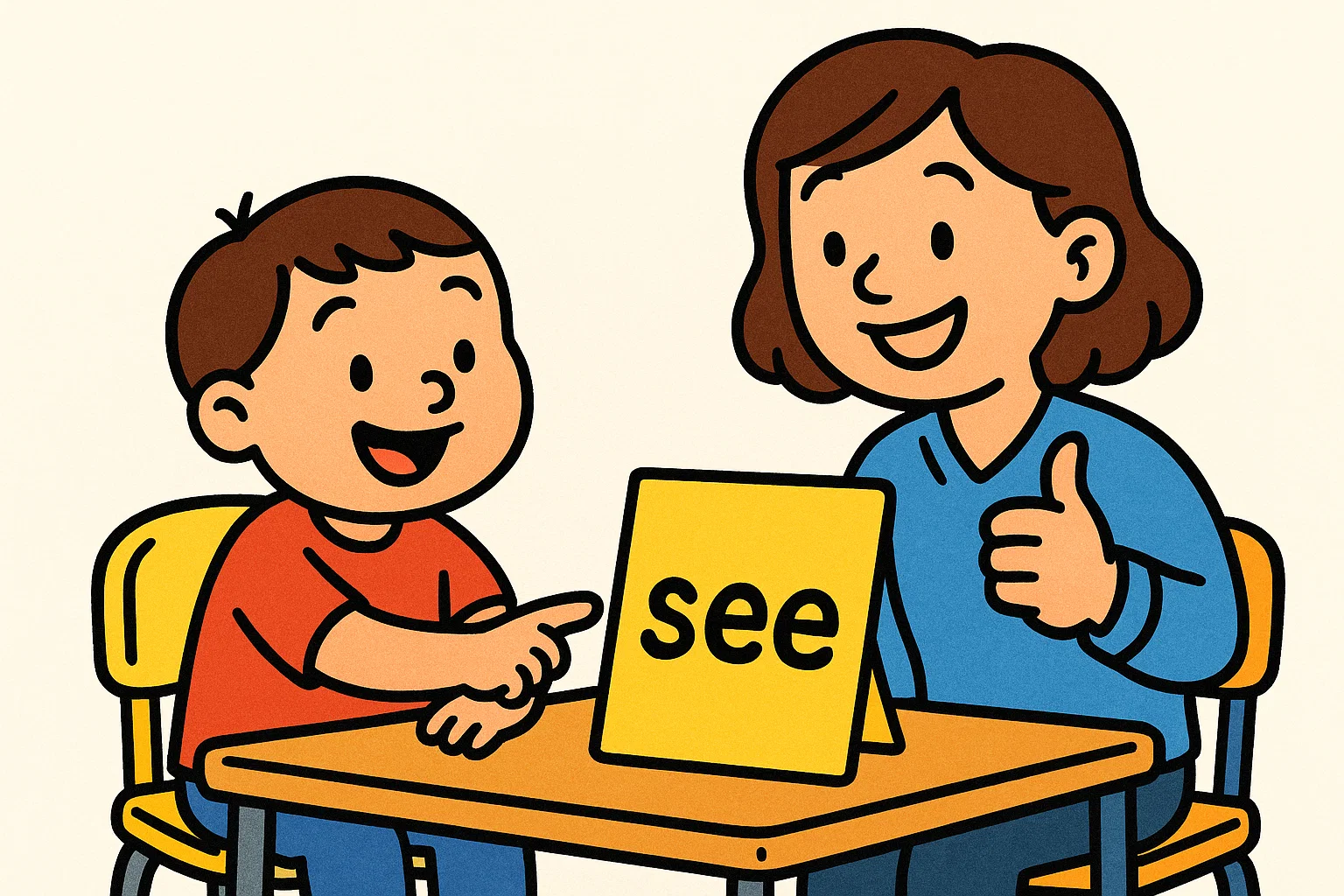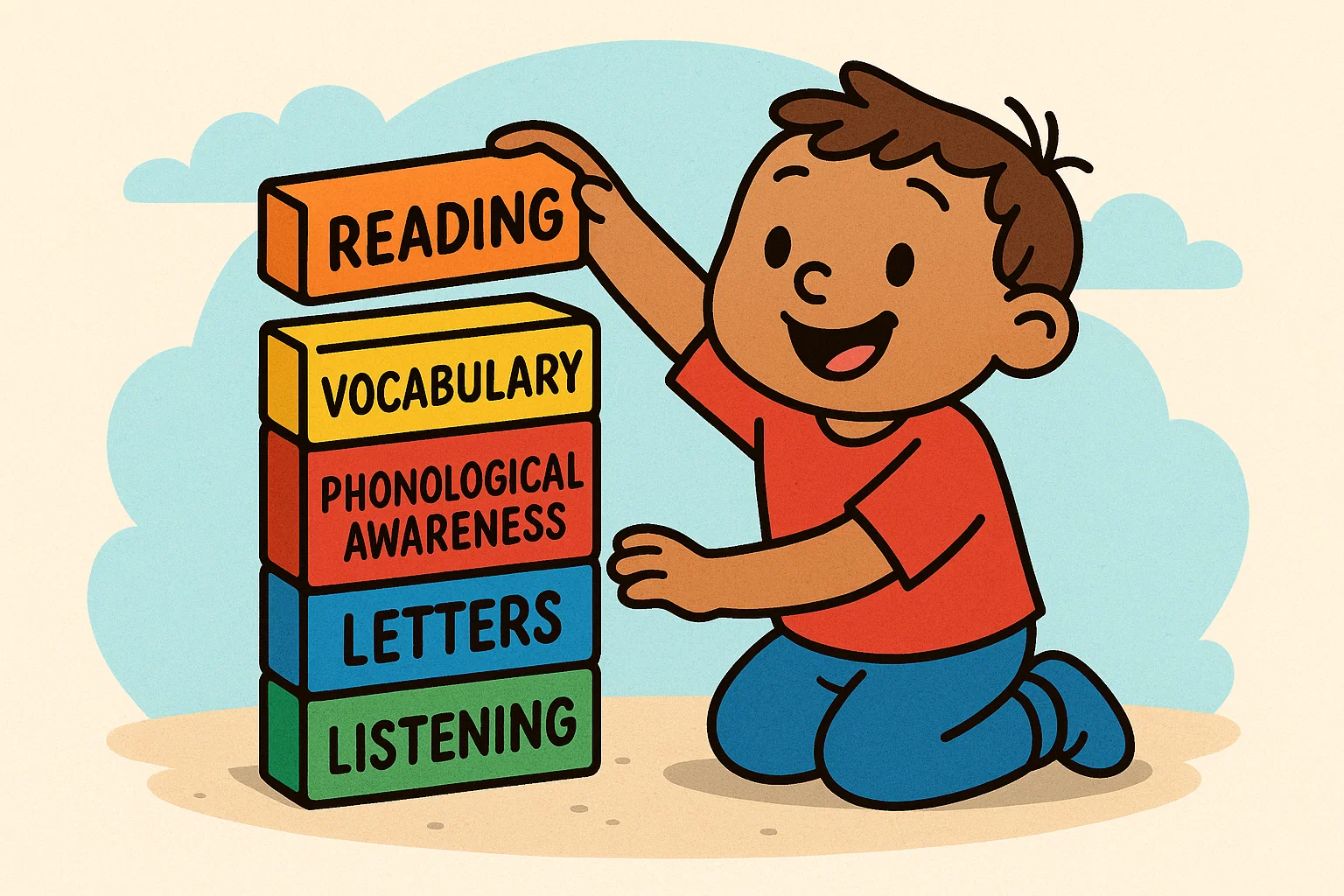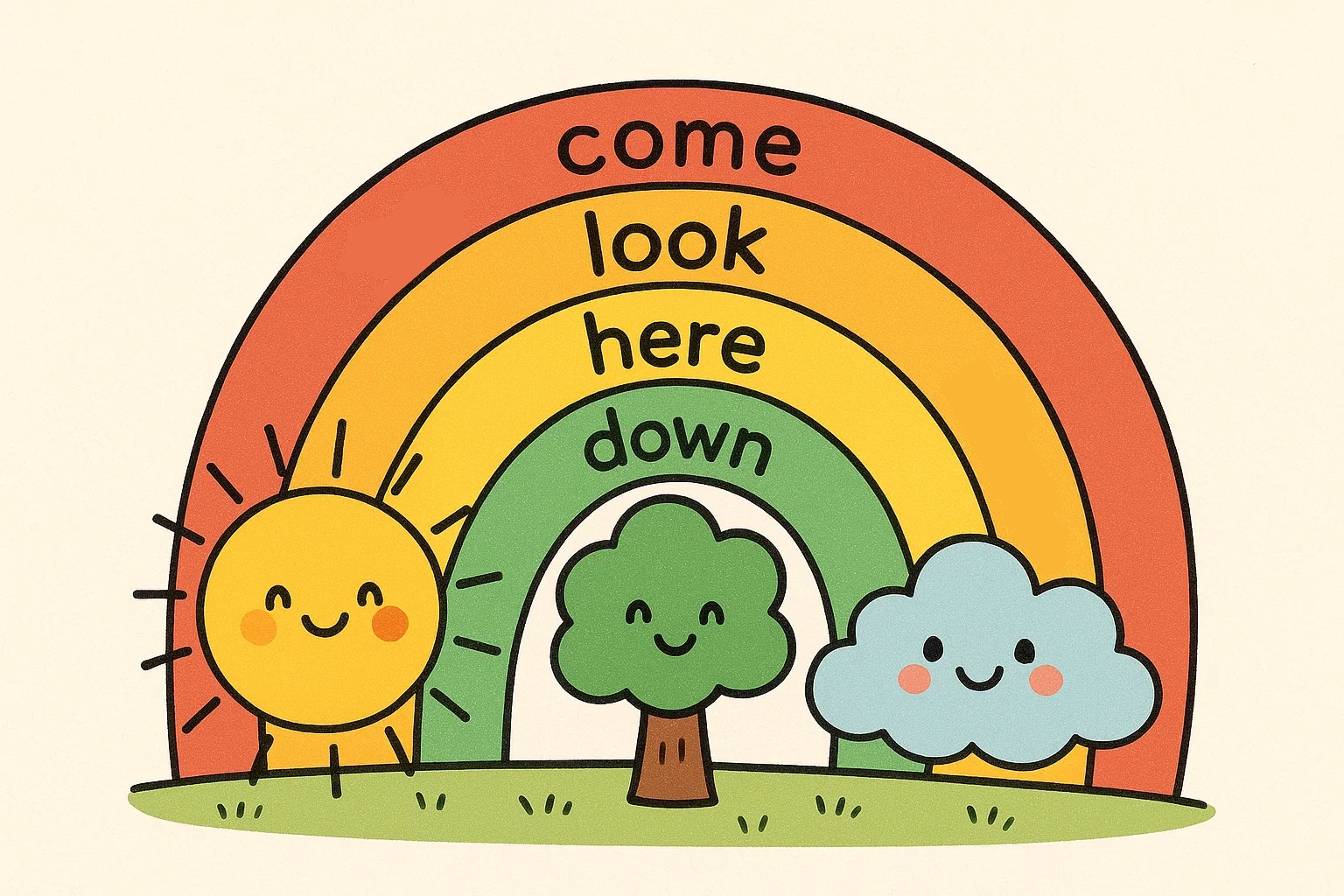Sight Word List and Teaching Guide for Preschoolers

Teaching young children to read involves many building blocks, and sight words form one of the most critical foundations. As a parent or educator working with preschool-aged children, you might wonder how to introduce these terms effectively and why they matter so much for early literacy development. This comprehensive guide will walk you through everything you need to know about teaching sight vocabulary to preschoolers, from understanding what they are to implementing engaging activities that make learning enjoyable.
What Sight Words Mean for Preschoolers

Sight words are common terms that a reader recognizes instantly without needing to sound them out. These simple words appear so frequently in written text that immediate recognition helps children read more fluently and with better comprehension. When your child can identify words like “the,” “and,” or “is” automatically, they can focus their mental energy on decoding new vocabulary and understanding the meaning of what they’re reading.
Why Learning Sight Words is Important
The importance of sight vocabulary in early education cannot be overstated. Research posted on SageJournals suggests that approximately half of the content in most children’s books consists of high-frequency words. When children memorize these commonly used terms, they can read simple sentences with greater confidence and speed.
Learning to read becomes less frustrating when your child doesn’t have to decode every single item. A child who knows sight words can focus on new vocabulary and comprehension, which builds both skill and enthusiasm for reading. In some cases, early mastery has been associated with stronger overall literacy development and academic success in later grades.
Consider this practical example: A preschooler reading the sentence “I see a big dog” might need to sound out only “big” and “dog” if they already know “I,” “see,” and “a” as sight vocabulary. This makes the reading process more manageable and less overwhelming.
The Differences Between Sight Words and High-Frequency Words
While people often use these terms interchangeably, there are subtle distinctions worth understanding. High-frequency words are simply terms that appear often in written language. The label describes how frequently something shows up in texts.
Sight words, on the other hand, are terms we want children to recognize instantly by appearance. Many sight vocabulary items are high-frequency, but not all high-frequency items need to be taught for instant recognition. Some frequently occurring terms follow regular phonics patterns and can be easily decoded.
Here’s a practical breakdown:
| Category | Examples | Teaching Approach |
| Sight Words (irregular) | “the,” “of,” “said,” “was” | Memorization through repeated exposure |
| Sight Words (regular but common) | “and,” “can,” “in,” “it” | Recognition practice for fluency |
| High-Frequency Phonics Words | “cat,” “run,” “sit,” “top” | Primarily through phonics instruction |
The goal is to help children memorize items that don’t follow standard phonics rules, while also building instant recognition of regular terms they’ll encounter constantly.
The Contrast Between Sight Words, Phonics, and Sounding Out
Understanding how sight vocabulary fits into the broader landscape of reading instruction helps you teach more effectively. Phonics teaches children the relationship between letters and their sounds, enabling them to decode unfamiliar terms by sounding them out.
Sounding out works beautifully for items like “cat,” “dog,” or “run” because these follow predictable patterns. However, many commonly used terms in English don’t follow phonics rules. Words like “the,” “said,” “does,” and “one” can’t be reliably decoded using standard letter-sound relationships.
This is where sight recognition becomes essential. Your child needs both phonics skills and sight word knowledge to become a competent reader. Phonics provides the tools for decoding new vocabulary, while sight mastery ensures fluency with irregular and frequently occurring terms.
A balanced approach to teaching reading includes:
- Phonics instruction for learning letter sounds and decoding regular patterns
- Sight word practice for memorizing high-frequency and irregular terms
- Reading comprehension strategies to understand meaning
- Phonemic awareness activities to manipulate sounds in spoken language
Important Pre-Reading Skills for Preschoolers

Before diving into formal sight word instruction, you’ll want to ensure your child has developed certain foundational skills. Preschoolers who possess strong pre-reading abilities tend to find learning recognition vocabulary easier and more enjoyable.
Language and Listening Skills Development
A rich vocabulary and strong listening comprehension form the bedrock of reading success. Children who hear lots of language—through conversations, storytelling, and read-aloud sessions—develop better understanding of how terms work together to create meaning.
You can strengthen these skills by:
- Reading books aloud daily and discussing the story
- Engaging in back-and-forth conversations about everyday experiences
- Asking open-ended questions that encourage your child to elaborate
- Introducing new vocabulary naturally in context
- Playing rhyming games and singing songs together
Research posted on ScienceDirect indicates that children who are exposed to diverse vocabulary in their early years often demonstrate stronger reading comprehension later. The sight words they learn to recognize will make more sense if they already understand those terms in spoken language.
Letter Knowledge and the Phonics Foundation
Before expecting your child to memorize sight vocabulary, they should have some basic letter knowledge. Most children begin recognizing letters between ages 3 and 4, though the pace varies considerably.
Your preschooler should ideally be able to:
- Recognize most uppercase and lowercase letters
- Understand that letters represent sounds
- Identify the beginning sounds of simple terms
- Show interest in print and how writing functions
This foundational phonics knowledge helps children distinguish between different sight words. Even though they won’t sound out items like “the” or “said,” knowing letters helps them notice the visual features that make each one unique.
Building Phonemic Awareness with Activities
Phonemic awareness—the ability to hear and manipulate individual sounds in spoken language—is a critical pre-reading skill. This awareness develops before children learn to read and write, and it significantly predicts future reading success.
Effective phonemic awareness activities for preschoolers include:
- Sound matching games: “Do ‘cat’ and ‘cap’ start with the same sound?”
- Rhyme identification: “Which word rhymes with ‘bat’: cat or dog?”
- Syllable clapping: Clapping out the parts in multi-syllable items like “but-ter-fly”
- Beginning sound isolation: “What sound do you hear at the start of ‘moon’?”
These activities require only a few minutes daily and can be incorporated naturally into playtime, car rides, or mealtime conversations. Children who can hear and manipulate sounds find it easier to connect those sounds to written letters and vocabulary.
Encouraging Your Child’s Interest and Motivation to Read
Perhaps the most important pre-reading skill is something that can’t be directly taught: genuine interest in reading. Children who are excited about books and curious about print will persist through the challenges of learning to read.
You can nurture this motivation by:
- Making reading time special and enjoyable, not a chore
- Letting your child choose books that interest them
- Celebrating small victories in their learning journey
- Reading books slightly above their current level to maintain challenge
- Modeling your own reading habits and enthusiasm for books
When children see reading as something valuable and enjoyable, they’ll be more receptive to sight word practice and other literacy activities. The goal during the preschool years is to build positive associations with learning.
List of Common Preschool Sight Words

While the complete Dolch list contains 220 terms organized by grade level, preschoolers typically focus on a smaller subset of the most basic items. The PreK Dolch collection includes 40 terms that children encounter frequently in early reading materials.
Here is a collection of common sight vocabulary appropriate for preschoolers:
Dolch PreK Sight Words (40 words):
a, and, away, big, blue, can, come, down, find, for, funny, go, help, here, I, in, is, it, jump, little, look, make, me, my, not, one, play, red, run, said, see, the, three, to, two, up, we, where, yellow, you
Additional High-Frequency Words for Early Learners:
am, at, all, be, but, did, do, get, good, has, he, into, like, must, new, no, now, on, our, out, please, pretty, ran, ride, saw, say, she, so, soon, that, there, they, this, too, under, want, was, well, went, what, white, who, will, with, yes
These terms appear constantly in simple sentences and early reader books. A preschooler who masters even 20-30 of these items will experience significantly improved reading fluency.
Progression Guide by Skill Level:
| Starting Level | Focus Words | Typical Timeframe |
| Beginning preschoolers | I, a, see, the, can | 2-3 months |
| Developing preschoolers | and, is, it, my, me, we, go | 2-4 months |
| Advanced preschoolers | said, come, look, here, where | 3-6 months |
Remember that every child develops at their own pace. These timeframes are general suggestions, not rigid expectations. Some preschoolers may learn sight vocabulary quickly, while others need more time and repetition.
Effective Tips for Teaching Sight Words to Preschoolers

Teaching sight recognition to young children requires patience, creativity, and an understanding of how preschoolers learn best. The following strategies have proven effective in helping children learn to read through instant recognition.
Keep Lessons Short with Hands-On Activities
Preschoolers have limited attention spans, typically ranging from 5 to 15 minutes for structured learning activities. Short, frequent practice sessions work better than lengthy lessons that might overwhelm or bore your child.
Plan to spend just 5-10 minutes on sight word practice daily. You might introduce one or two new items per week while reviewing previously learned vocabulary. This approach prevents frustration and allows for sufficient repetition without tedium.
Hands-on learning activities resonate particularly well with young children. Consider these engaging approaches:
- Tracing in sand or rice: The sensory experience reinforces memory
- Building with letter magnets or blocks: Physical manipulation aids learning
- Creating cards with textures: Children can touch while learning
- Using playdough to form letters: Multi-sensory engagement strengthens recall
A parent I worked with created a simple routine where her 4-year-old son spent five minutes before breakfast tracing sight vocabulary in a shallow tray of colored sand. Within three months, he had mastered 25 items and looked forward to this daily ritual.
Model Reading and Shared Reading Practice
Children learn by watching and imitating the adults in their lives. When you read aloud, point to text as you go, demonstrating how print functions and where reading happens on the page.
Shared reading provides an excellent opportunity to reinforce sight words naturally. As you read together:
- Point to sight vocabulary your child knows and pause for them to identify each one
- Ask your child to find a specific term on the page
- Take turns reading simple sentences, with your child reading known items
- Praise their recognition and gently provide corrections when needed
This collaborative approach builds confidence while showing children how sight vocabulary functions within actual text. It bridges the gap between isolated practice and real reading experiences.
Incorporate Sight Words into Daily Routines
Children learn best when instruction connects to their everyday experiences. Look for natural opportunities to point out and practice sight recognition throughout your daily routine.
You can reinforce learning by:
- Labeling household items with familiar terms (“the door,” “my bed,” “we play”)
- Playing “I spy” games during car rides
- Writing simple notes or messages that include vocabulary your child knows
- Creating a display wall in your child’s room where they can see familiar items
- Encouraging your child to find known terms in signs, menus, or packaging
One creative mother placed sticky notes around her house for a weekly scavenger hunt. Her daughter would search for specific items and receive stickers for each one found. This turned learning into an adventure rather than a chore.
Setting Realistic Expectations for the Learning Process
Every child learns at a different pace, and preschoolers in particular show wide variation in their readiness for academic skills. Some 3-year-olds eagerly learn sight vocabulary, while others aren’t developmentally ready until age 5 or even later.
It’s important to remember that:
- Most preschoolers can learn 10-30 recognition items before kindergarten
- Some children may progress more quickly or more slowly, both of which are normal
- Pushing too hard can create negative associations with reading
- Progress isn’t always linear—children may have plateaus or temporary regressions
- Many items require dozens of exposures before mastery occurs
This means patience and consistent, low-pressure practice yield better results than intensive cramming sessions.
If your child shows frustration or resistance, it may indicate they need more time developing pre-reading skills before focusing heavily on sight vocabulary. You can continue building letter knowledge, phonemic awareness, and oral vocabulary while occasionally introducing simple sight words in context.
Fun Sight Word Activities and Games for Preschoolers
Making sight word practice playful and engaging helps children develop positive associations with reading while building automaticity with common terms. The following learning activities have proven particularly effective with preschool-aged children.
Interactive Games and Sensory Writing Ideas
Movement and sensory experiences help young children encode information more effectively than passive studying. These activities transform sight word practice into memorable experiences:
Sensory Writing Activities:
- Writing in shaving cream: Spray shaving cream on a table or cookie sheet and let your child trace sight vocabulary with their fingers. The unusual texture makes this activity novel and fun.
- Painting with water: Give your child a paintbrush and cup of water to “paint” terms on a chalkboard or dark construction paper. The letters appear and then disappear as they dry.
- Creating with playdough: Roll playdough into snakes and form the letters. This builds fine motor skills alongside literacy.
- Tracing with a flashlight: Write sight words on paper and darken the room. Let your child trace each one with a flashlight beam.
Movement-Based Games:
- Hopscotch: Write terms in sidewalk chalk hopscotch squares. Children hop to and read each one.
- Toss games: Write on paper plates or bean bags. Children toss them into baskets while reading aloud.
- Freeze dance: Play music and hold up flash cards. When the music stops, children freeze and read the displayed item.
These activities work especially well for kinesthetic learners who need to move while learning. A kindergarten teacher I know uses yoga, where children form their bodies into letter shapes while spelling together.
Sight Word Bingo, Memory, and Scavenger Hunts
Traditional games adapted for sight word practice offer structure while remaining enjoyable. These games also work well in both home and classroom settings.
Sight Word Bingo:
Create bingo cards with 9 or 16 terms arranged in a grid. Call out items randomly, and children cover the matching one on their card with a chip or marker. The first person to complete a row wins. This game reinforces recognition while maintaining excitement and engagement.
You can adjust difficulty by starting with just 6-8 familiar items and gradually introducing new ones. Many will appear multiple times across different cards, providing the repetition needed for memorization.
Sight Word Memory (Matching Game):
Write on index cards, creating two identical cards for each item. Place all cards face-down in a grid pattern. Children take turns flipping two cards, trying to find matches. When they flip a card, they must read it aloud before turning over a second card.
This game builds visual memory while reinforcing recognition. Start with just 5-6 pairs for younger preschoolers and increase the number as their skills develop.
Sight Word Scavenger Hunts:
Hide cards around a room or outdoor space. Give your child a list of items to find (you can include pictures for pre-readers). As they locate each one, they must read it aloud and collect it.
Variations include:
- Finding in specific colors (“Find all the blue ones”)
- Collecting in order to build a sentence
- Racing against a timer for added excitement
- Working cooperatively with siblings or classmates
These activities can be easily modified as children learn more. The key is keeping the experience positive and celebrating progress rather than perfection.
Simple Sight Word Games Using Worksheets:
While active games tend to be most engaging, worksheet activities have their place in a balanced approach. High-quality worksheets can provide valuable practice when used appropriately:
- Tracing worksheets: Children trace multiple times, building muscle memory
- Search puzzles: Kids find and circle items hidden among letters
- Fill-in-the-blank sentences: Children complete simple sentences using a bank of options
- Dot-a-word activities: Children use dot markers to stamp letters
The key with worksheets is using them in moderation and pairing them with more interactive activities. A short worksheet session might follow an active game, providing a calm-down activity while reinforcing the same vocabulary.
Creating a Sight Word Routine:
Many families and educators find success with a weekly routine that incorporates multiple activity types:
- Monday: Introduce 1-2 new items using flash cards and sensory writing
- Tuesday: Play a matching game with new and review vocabulary
- Wednesday: Complete a simple worksheet or tracing activity
- Thursday: Go on a scavenger hunt or play movement-based games
- Friday: Play bingo or another favorite game as a review
This structure provides variety while ensuring consistent practice. The repeated exposure through different modalities helps children memorize more effectively.
